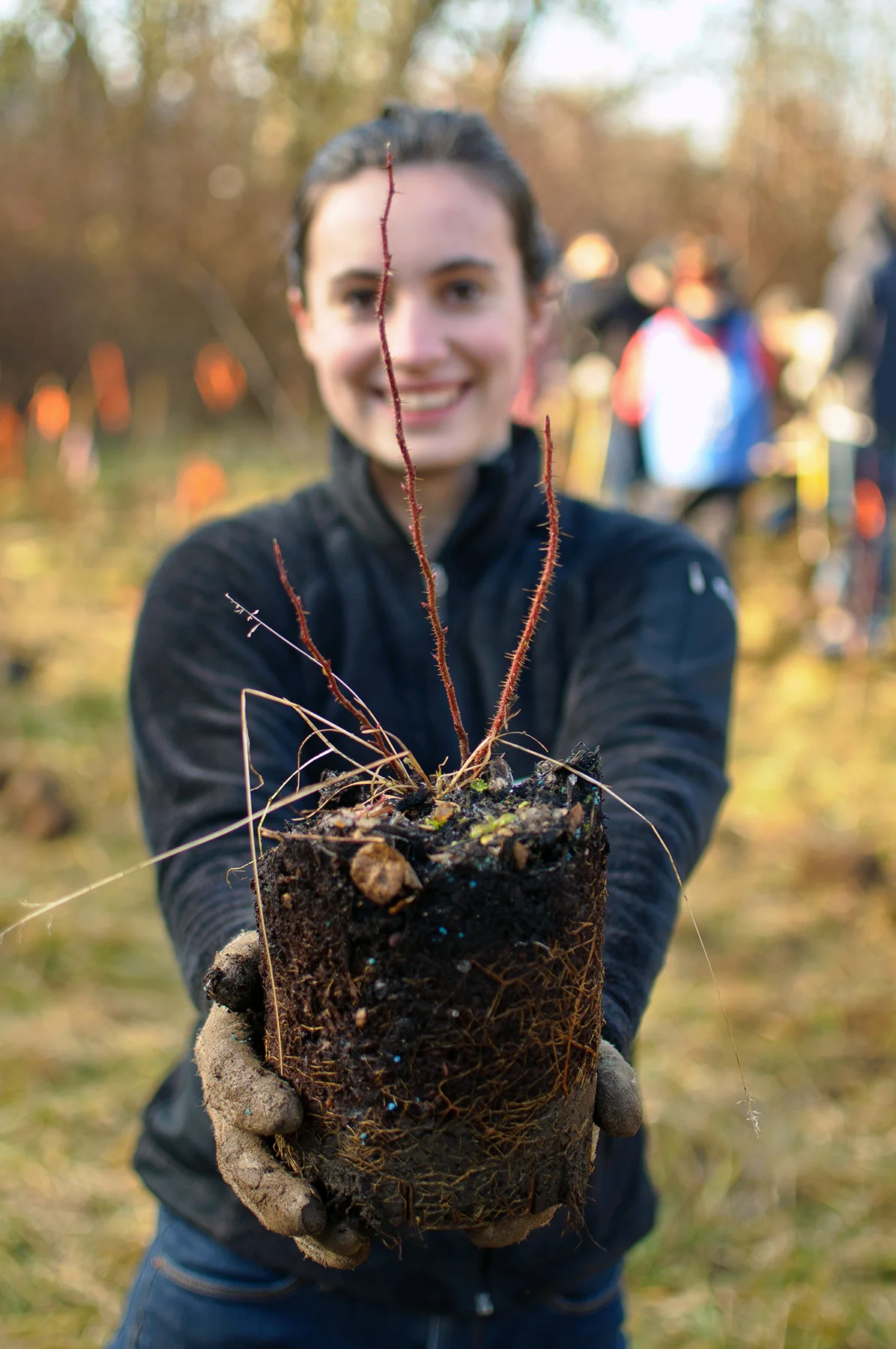How to Plant Trees and Shrubs
Trees and shrubs can transform the look of your landscape while providing oxygen, shade, privacy, canopy for wildlife, soil erosion prevention and even increased property value! Learn how to set your trees and shrubs up for success with our tips on when and how to plant.
When to Plant
There are many advantages to planting in the fall.
Moderate to cool temperatures are easier on newly established plants, allowing them to focus their energy on strong root growth.
Increased moisture from rain strengthens the root system.
Your trees and shrubs will have plenty of time to establish themselves, leaving them ready for new growth when warm weather arrives.
If fall planting isn’t possible, the next best option is spring – the other transition season.
1. Dig
The number one cause of death for newly planted trees and shrubs is planting too deep. One study, by the Clemson University Horticulture Department, estimated that about 75-95 percent of trees are planted too deep, causing girdling roots, rot, restricted oxygen flow and increased harmful insect activity.
Determine how deep to plant your tree by finding the root flare, where the base of the trunk meets the first main roots. If you’re having trouble finding the root flare, take the tree out of its container or pull back the burlap and remove excess dirt until it’s revealed.
Dig your hole depth so that the root flare is level with the original soil. The hole width should be 2-3 times the root bulb, with the farthest edges shallower than the middle to create a saucer shape that promotes proper root growth.
2. Feed
Fertilizing your new tree or shrub supports root growth, helping the plant grow strong and healthy. Clean Water Grow All-Purpose Plant Food is a great choice; the slow-release blend only feeds your plants when they need it, avoiding root burn and reducing applications. Simply sprinkle some Clean Water Grow into the hole before placing your tree and it will continue to feed your plant well into its spring growth-spurt.
3. Plant
Always lift your tree by the root bulb or container, not by the trunk, and follow these steps to place it in the hole:
Plastic Container: Gently remove the tree from its container, tapping on the edges to loosen it up. Take a look at the bottom of the root bulb. If the roots are matted from being container-bound, gently tease them to encourage new growth. If the roots are so badly matted that they’re starting to circle around the root bulb, take a knife and cut an “X” into the bottom of the matted roots, this encourages new downward growth.
Wire Basket: Place the tree in the center of the hole. Use wire cutters to remove the basket.
Burlap: Place the tree in the center of the hole and remove all twine and staples. Cut off excess burlap. If the burlap hasn’t been treated with preservatives, it’s OK to leave some of it in the hole.
Once the tree is in the hole, fill in the hole with the soil you removed when digging. There’s no need to add soil amendments like peat, compost or manure. In fact, soil amendments reduce the plants’ natural urge to extend their roots and find nutrients and water.
Pack down the soil to reduce air pockets and keep the tree standing upright. After the hole is full, create a berm 3-4 inches high around the outer ring; this acts as a funnel directing water to the center of the tree.
4. Water
Give your new tree or shrub a good watering. Continue to water your plant once a week during its first growing season.
5. Mulch
After the first watering has soaked in, it’s time to add a layer of mulch, such as straw, leaves, bark or aged wood chips. Mulch helps keep plants moist and weed-free.
Spread mulch 2-4 inches thick in a 2-3 foot diameter around the tree, keeping a small 1-2 inch circle around the base of the trunk mulch free. Make sure your layer of mulch is even throughout; avoid the common “volcano” mistake of increasing the mulch height as you near the trunk of the tree.
6. Continued Care
Continued care of your new tree or shrub is important during its first year.
Water generously, particularly during times of extreme heat or little rainfall.
Prune dead, broken or wayward limbs to encourage new growth.
Fertilizer after six months with Clean Water Grow to maintain healthy growth.




